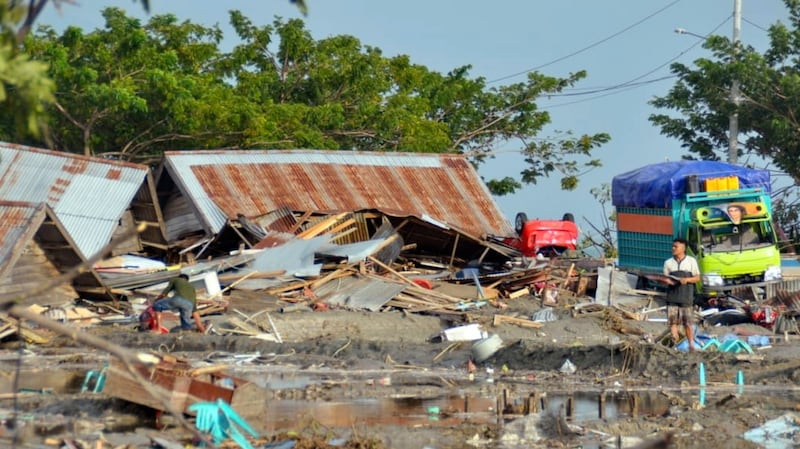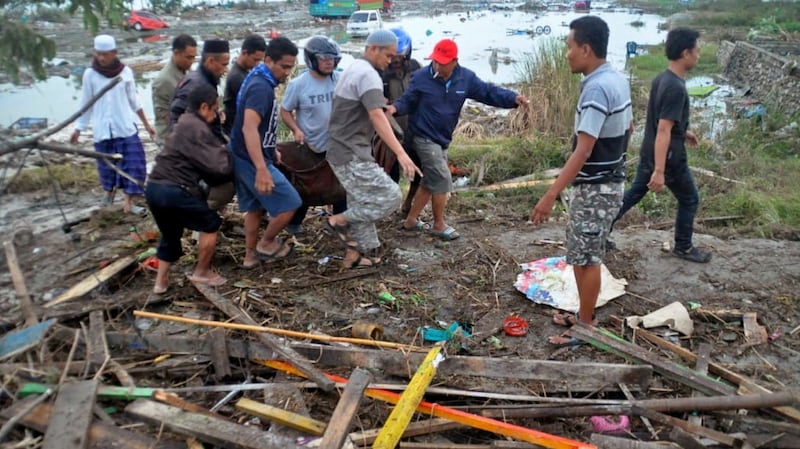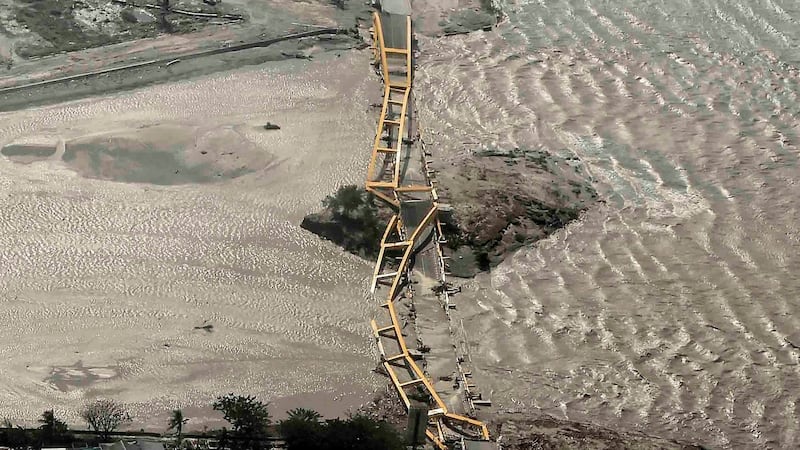More than 400 people have been confirmed dead after tsunami waves triggered by a massive earthquake crashed into the Indonesian island of Sulawesi.
Authorities expected the death toll to rise sharply on Sunday as news arrives from remote areas.
Dozens of people were reported to be still trapped in the rubble of a hotel in the city of Palu, which was hit by waves as high as 6m following the 7.5-magnitude earthquake.
Hundreds had gathered for a festival on the city’s beach when the wall of water smashed onshore at dusk on Friday, sweeping many to their deaths and destroying anything in its path. Indonesian president Joko Widodo was scheduled to visit evacuation centres in the city on Sunday.
The tsunami had reportedly travelled across the open sea at speeds of 800km/h before striking the shoreline.
Strong aftershocks continued to rock the coastal city on Saturday morning .
"When the [tsunami] threat arose yesterday, people were still doing their activities on the beach and did not immediately run and they became victims," Sutopo Purwo Nugroho, spokesman for Indonesia's disaster mitigation agency BNPB, said in a news briefing in Jakarta.

The head of the BNPB, Willem Rampangilei, told reporters in Sulawesi late on Saturday that the death toll from Palu had reached 420 people, according to news website Kompas.
“It’s estimated that 10,000 refugees are scattered in 50 points in Palu city,” he was quoted by Kompas as saying. “We are having difficulty deploying heavy equipment to find victims under the rubble of buildings because many of the roads leading to Palu city are damaged.”
Mr Nugroho said that casualties and damage could be greater along the coastline 300km north of Palu, in an area called Donggala, which is closer to the epicentre of the quake.
Communications “were totally crippled with no information” from Donggala, Mr Nugroho said.
“We’re now getting limited communications about the destruction in Palu city, but we have heard nothing from Donggala and this is extremely worrying. There are more than 300,000 people living there,” the Red Cross said in a statement, adding that its staff and volunteers were heading to the affected areas.
“This is already a tragedy, but it could get much worse.”
Indonesia’s vice-president Jusuf Kalla said the death toll could rise to thousands.
Condolences
President Michael D Higgins has sent his condolences to the people of Indonesia.
“Sabina and I send our condolences to those who have lost family members or have been injured and affected by the disaster,” he said.
“All praise is due to the first responders and to all those who have come to the aid of the victims. May they receive the urgent assistance, and the solidarity, they need from the global community and its institutions.”

Some people had climbed trees to escape the tsunami and survived, Mr Nugroho said.
Photos confirmed by authorities showed bodies being lined up along the street on Saturday, some in bags and some with their faces covered with clothes.
Amateur footage shown by local TV stations, which could not immediately be authenticated by Reuters, showed waters crashing into houses along Palu’s shoreline, scattering shipping containers and flooding into a mosque in the city.
Mr Nugroho described the damage as “extensive” with thousands of houses, hospitals, shopping malls and hotels collapsed, a bridge washed away and the main highway to Palu cut due to a landslide.
Bodies of some victims were found trapped under the rubble of collapsed buildings, he said, adding that 540 people were injured.
Dozens of injured people were being treated in makeshift medical tents set up outdoors, TV images showed.

Indonesia’s meteorological and geophysics agency BMKG issued a tsunami warning after the quake, but lifted it 34 minutes later. The agency has been widely criticised for withdrawing the warning too quickly, though officials said waves had come within the time the warning was issued.
The quake and tsunami caused a major power outage in Palu and authorities were still having difficulties co-ordinating rescue efforts.
Chief security minister Wiranto told TVOne the military had started sending in cargo planes from the capital Jakarta carrying aid.
Palu’s airport was closed after its runway and air traffic control tower were damaged in the quake but officials said they were preparing to reopen it to allow aid to come in.
The Palu area was hit by another, less powerful quake earlier on Friday, which destroyed some houses, killed one person and injured at least 10 in Donggala, authorities said.
The US Geological Survey put the magnitude of the second quake at a strong 7.5, after first saying it was 7.7.
Indonesia sits on the Pacific Ring of Fire and is regularly hit by earthquakes. In August, a series of major quakes killed more than 500 people in the tourist island of Lombok and destroyed dozens of villages along its northern coast.
Palu was hit by tsunamis in 1927 and 1968, according to BNPB. – Reuters












